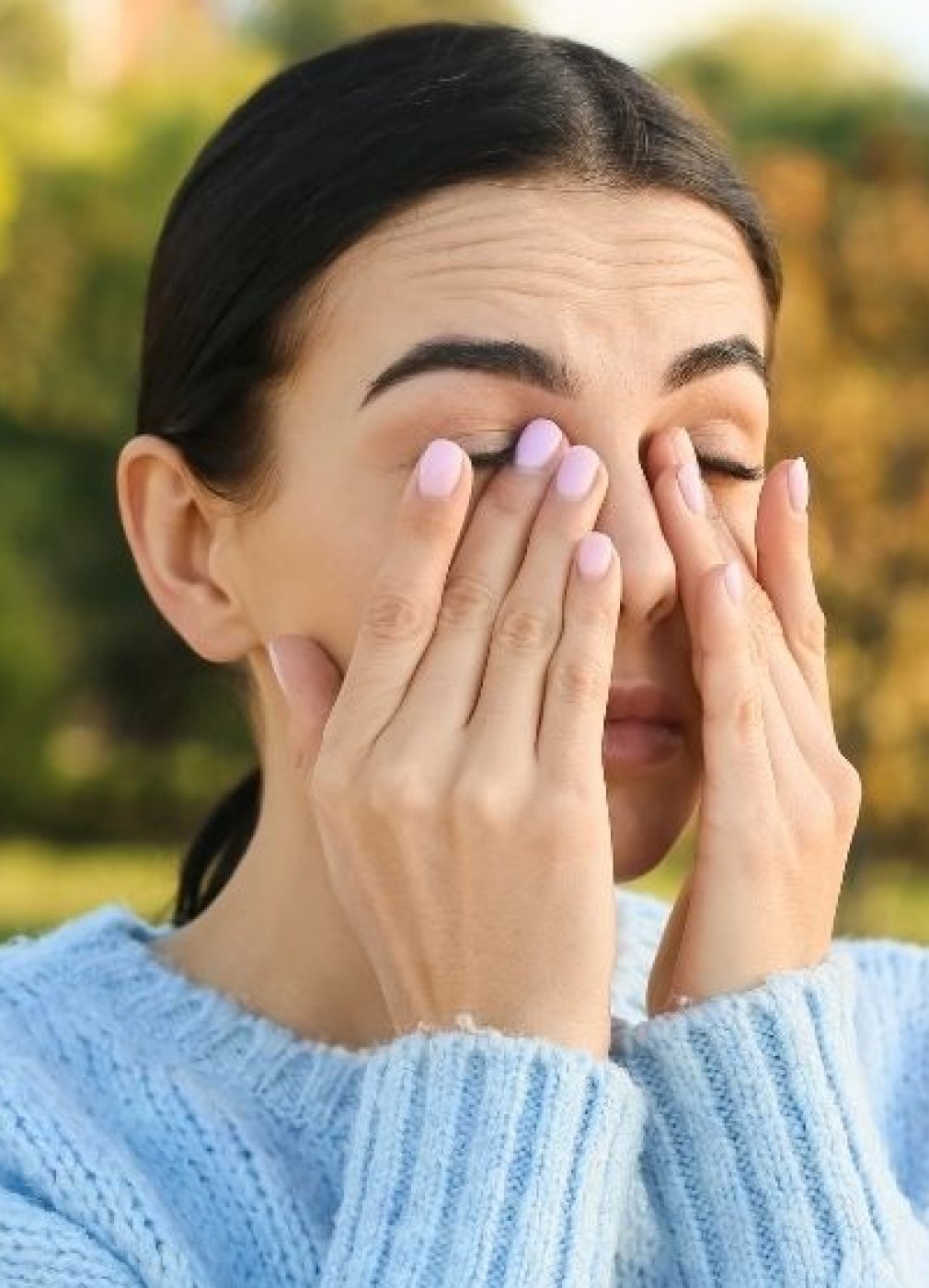EYE ALLERGIES
Eye allergies are very common and occur when the eyes react with something that irritates them, an allergen. The eyes produce histamine upon contact with the allergen and as a result the eyelids and conjunctiva become red, swollen and itchy. Unlike the other types of conjunctivitis, allergies are not contagious.

CAUSES
People who suffer from eye allergies tend to suffer from nasal allergies (sneezing, congestion and itchy nose). This being a condition that is associated with seasonal changes.
01
DIFFERENT TYPES OF ALLERGENS
Pollen from plants, grasses or trees.
Dandruff
Animals
Mold
Fumes
Chemical preservatives found in some eyedrops.
02
INHERITED ALLERGIES
These are allergies inherited from one or more parent. These individuals are more susceptible to develop allergies if one or both parent has them.
AVOIDING ALLERGENS
You should avoid going out when the pollen forecast is high. If you must, consider wearing glasses or shades to avoid direct contact with the allergen. Keep windows and doors closed to decrease the allergen exposure inside.
Pollen
Keep your environment clean, especially your room. Try not to have carpets, curtains, or cushions that may store dust. Wash your sheets regularly in hot water (>130 F). To free your room from potential allergens, you may want to use an air purifier while you sleep.
Dust-dwelling Mites
It is associated with high humidity levels, therefore, try to maintain humidity levels in the air at 30-50%. Keep areas with high humidity clean – basements, bathrooms, and kitchens. If needed, consider using air dehumidifier.
Mold
Try to keep them out of your room so that you maintain an allergen-free area while you are sleeping. Consider avoiding carpets in your home that catch animal hairs. Wash your hands after touching your pets and wash the clothes that you were wearing while you were with them.
Pet Allergens
Redness, itching and swelling.
Burning and tearing sensation.
Sensitivity to light.
If ocular allergies are accompanied by nasal allergies, then they can present with sneezing, congestion and itchy nose.
DIAGNOSIS
Using an applicator which contains small amounts of allergens, small samples will be placed on your arms so that the allergens may enter your skin. The applicator is like a comb and the applied samples will be marked so that we are later able to identify which allergens caused a reaction.
You will wait 15 to 20 minutes and should avoid scratching or touching your arms. The Horta-Santini Eye Care team will then evaluate your arm for swelling, itching and redness. At the end of your test, a cream to relieve allergic reactions will be applied to your arms.
TREATMENTS
-
These relieve allergies by temporarily cleansing allergens from the ocular surface. In addition, they relieve dryness and irritation. You can use these over the counter drops up to 6 times a day. If you need them more often, then get the drops without preservatives.
-
These relieve redness and can be obtained without a prescription. If they have antihistamines, you will get relief from the itching. These drops should not be used for more than 2 to 3 times a day. Chronic use of these can worsen your condition.
-
They help relieve itchy eyes, but they can dry up the eye making the allergy symptoms worse.
-
These drugs help prevent allergies. Using them once or twice per day will relieve symptoms. How often you apply them depends on which medication you obtain.
-
They can be used to treat chronic and severe allergy symptoms. As they can have side effects, these should never be used without medical supervision.
-
If the previous treatment fails, then these injections can be tried. Immunotherapy involves injecting the person with a low dose of the allergen, which it is increased over time depending on the patient’s tolerance.






